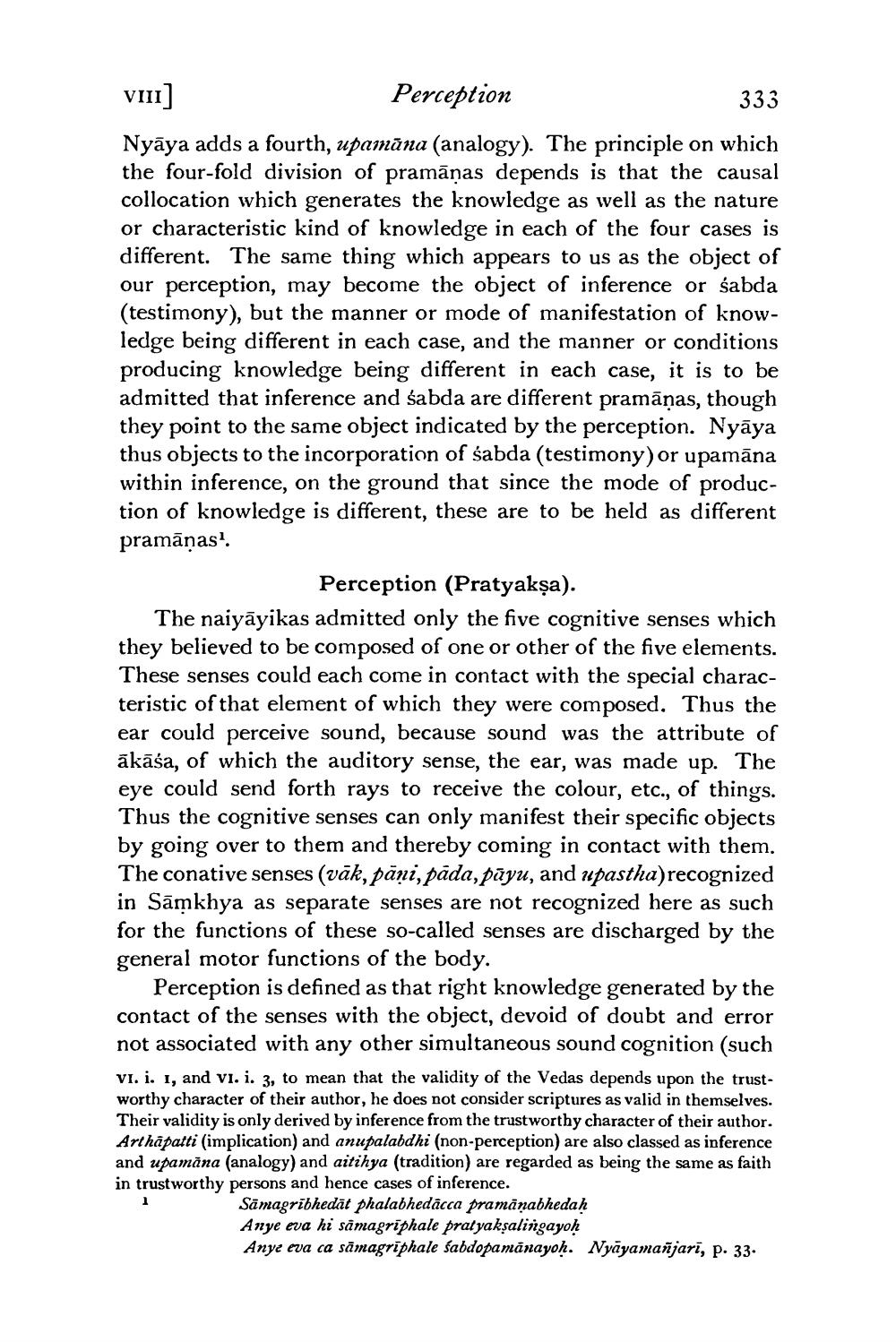________________
VIII]
Perception
333
Nyāya adds a fourth, upamāna (analogy). The principle on which the four-fold division of pramāṇas depends is that the causal collocation which generates the knowledge as well as the nature or characteristic kind of knowledge in each of the four cases is different. The same thing which appears to us as the object of our perception, may become the object of inference or śabda (testimony), but the manner or mode of manifestation of knowledge being different in each case, and the manner or conditions producing knowledge being different in each case, it is to be admitted that inference and sabda are different pramāņas, though they point to the same object indicated by the perception. Nyāya thus objects to the incorporation of sabda (testimony) or upamāna within inference, on the ground that since the mode of production of knowledge is different, these are to be held as different pramānas?
Perception (Pratyakşa). The naiyāyikas admitted only the five cognitive senses which they believed to be composed of one or other of the five elements. These senses could each come in contact with the special characteristic of that element of which they were composed. Thus the ear could perceive sound, because sound was the attribute of ākāśa, of which the auditory sense, the ear, was made up. The eye could send forth rays to receive the colour, etc., of things. Thus the cognitive senses can only manifest their specific objects by going over to them and thereby coming in contact with them. The conative senses (vāk, pāņi, pāda, pāyu, and upastha)recognized in Sāmkhya as separate senses are not recognized here as such for the functions of these so-called senses are discharged by the general motor functions of the body.
Perception is defined as that right knowledge generated by the contact of the senses with the object, devoid of doubt and error not associated with any other simultaneous sound cognition (such VI. i. 1, and vi. i. 3, to mean that the validity of the Vedas depends upon the trustworthy character of their author, he does not consider scriptures as valid in themselves. Their validity is only derived by inference from the trustworthy character of their author. Arthāpatti (implication) and anupalabdhi (non-perception) are also classed as inference and upamāna (analogy) and aitihya (tradition) are regarded as being the same as faith in trustworthy persons and hence cases of inference.
Sāmagribhedāt phalabhedacca pramānabhedah Anye eva hi samagriphale pratyaksalingayoh Anye eva ca sāmagriphale śabdopamānayoh. Nyāyamañjarī, p. 33.




